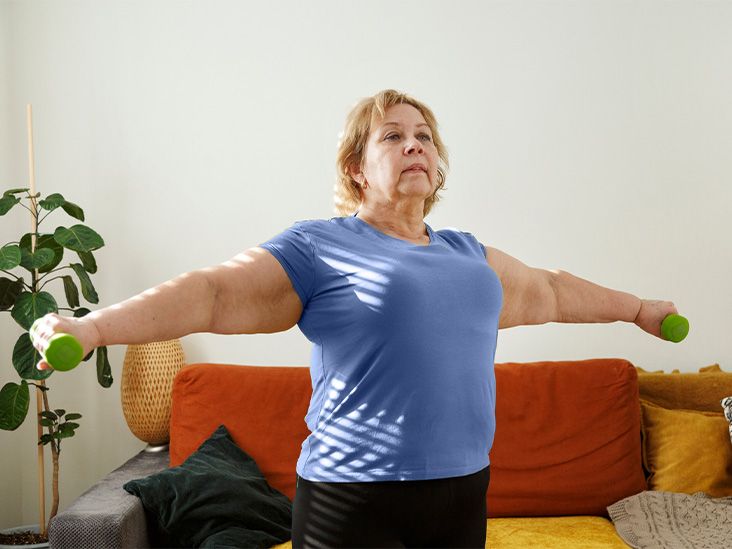Metabolism refers to biochemical processes that occur within any living organism, including humans, to maintain life. These biochemical processes allow the body to grow, reproduce, repair damage, and more.
When people use the word “metabolism” they are often referring to catabolism and anabolism. Catabolism is the breaking down of compounds to release energy, while anabolism is the building of compounds, which uses energy.
A person’s body weight is a result of catabolism minus anabolism.
It is a common belief that people with lower body weights have a higher metabolism and people with higher body weights have a slower metabolism. In fact, this is very rarely the case.
This article will discuss the facts behind metabolism, what it is, what it does, and how it is influenced.
A note about sex and gender
Sex and gender exist on spectrums. This article will use the terms “male,” “female,” or both to refer to sex assigned at birth. Learn more.

Despite what promoters of certain brands of “health” foods say, there is little people can do to significantly change their resting metabolic rate.
Long-term strategies, such as increasing muscle mass, may eventually have an effect. However, research into this topic is limited. An older 2013 study on mice suggested that increasing muscle mass may help improve metabolism.
However, determining a body’s energy needs and adapting lifestyle accordingly will have a quicker effect on altering body weight.
Most people use the term “metabolism” incorrectly for either anabolism or catabolism:
- Anabolism is the building up of things: A succession of chemical reactions that builds molecules from smaller components; anabolic processes usually require energy.
- Catabolism is the breaking down of things: A series of chemical reactions that break down complex molecules into smaller units; catabolic processes usually release energy.
Anabolism
Anabolism allows the body to grow new cells and maintain all tissues. Anabolic reactions use simple chemicals and molecules to manufacture many finished products. Examples include the growth and mineralization of bone and increases in muscle mass.
Classic anabolic hormones include:
- Growth hormone: A hormone made by the pituitary gland that stimulates growth.
- Insulin: A hormone made by the pancreas. It regulates the level of sugar, or glucose, in the blood. Cells cannot utilize glucose without insulin.
- Testosterone: A hormone involved in the development of male characteristics, such as a deeper voice and facial hair. It also strengthens muscles and bone.
- Estrogen: A hormone involved in strengthening bone mass, as well as developing female characteristics, such as breasts.
Catabolism
Catabolism breaks things down and releases energy; it uses larger compounds to create smaller compounds, releasing energy in the process. Catabolism provides the energy bodies need for physical activity, from cellular processes to body movements.
Catabolic reactions in the cells break down polymers (long chains of molecules) into their monomers (single units). For example:
- Polysaccharides are broken down into monosaccharides: For instance, starch is broken down into glucose.
- Nucleic acids are broken down into nucleotides: Nucleic acids, such as those that make up DNA, are broken down into purines, pyrimidines, and pentose sugars. These are involved in the body’s energy supply.
- Proteins are broken down into amino acids: In some circumstances, protein is broken down into amino acids to make glucose.
When a person eats, their body breaks down nutrients, releasing energy. This
The energy stored in ATP is the fuel for anabolic reactions. Catabolism creates the energy that anabolism consumes for synthesizing hormones, enzymes, sugars, and other substances for cell growth, reproduction, and tissue repair.
Body weight is a result of catabolism minus anabolism — the amount of energy released into the body (catabolism) minus the amount of energy the body uses up (anabolism).
Excess energy is stored either as fat or glycogen in the muscles and liver. Glycogen is the
One gram of fat produces 9 calories, compared with 4 calories from a gram of protein or carbohydrate.
Although obesity results from the body storing excess energy as fat, sometimes, hormonal problems or another underlying medical condition may affect metabolism.
There are
Body size and composition
A larger body mass requires more calories. People with more muscle in relation to fat will require more calories than individuals who weigh the same but have less muscle in relation to fat.
Therefore, people with a higher muscle-fat ratio have a higher basal metabolic rate than people with a lower muscle-fat ratio, if their weight is the same.
Age
As people age, several factors emerge that result in a lower calorie requirement. Muscle mass drops, resulting in a higher fat-muscle ratio. Also, the following age-related factors reduce a person’s calorie requirement:
- Hormones: Males produce less testosterone, and females produce less estrogen with age. Both hormones are involved in anabolic processes that consume energy.
- Menopause: As females approach menopause, there is a drop in hormones that normally promote energy use. Many people find it harder to lose weight during this time.
- Physical activity: Older adults tend to be less physically active than when they were younger.
- Sex assigned at birth: Males have a higher metabolic rate than females because their muscle-to-fat ratio is higher. This means that an average male will burn more calories than an average female of the same age and weight.
People should contact a healthcare professional if they are concerned about their weight or meeting their calorie requirements.
A doctor can help people determine what to include and avoid in their diet and how to manage their weight safely.
A person should not make significant changes to their diet without first speaking with a healthcare professional.
People often use metabolism to refer to catabolism and anabolism, which involve energy use and storage in the body. However, metabolism refers to a group of biochemical processes, including, but not limited to, catabolism and anabolism.
A person cannot easily change their basal metabolic rate.
People should speak with a doctor if they are concerned about their calorie intake, weight, or other aspects of metabolic health.


